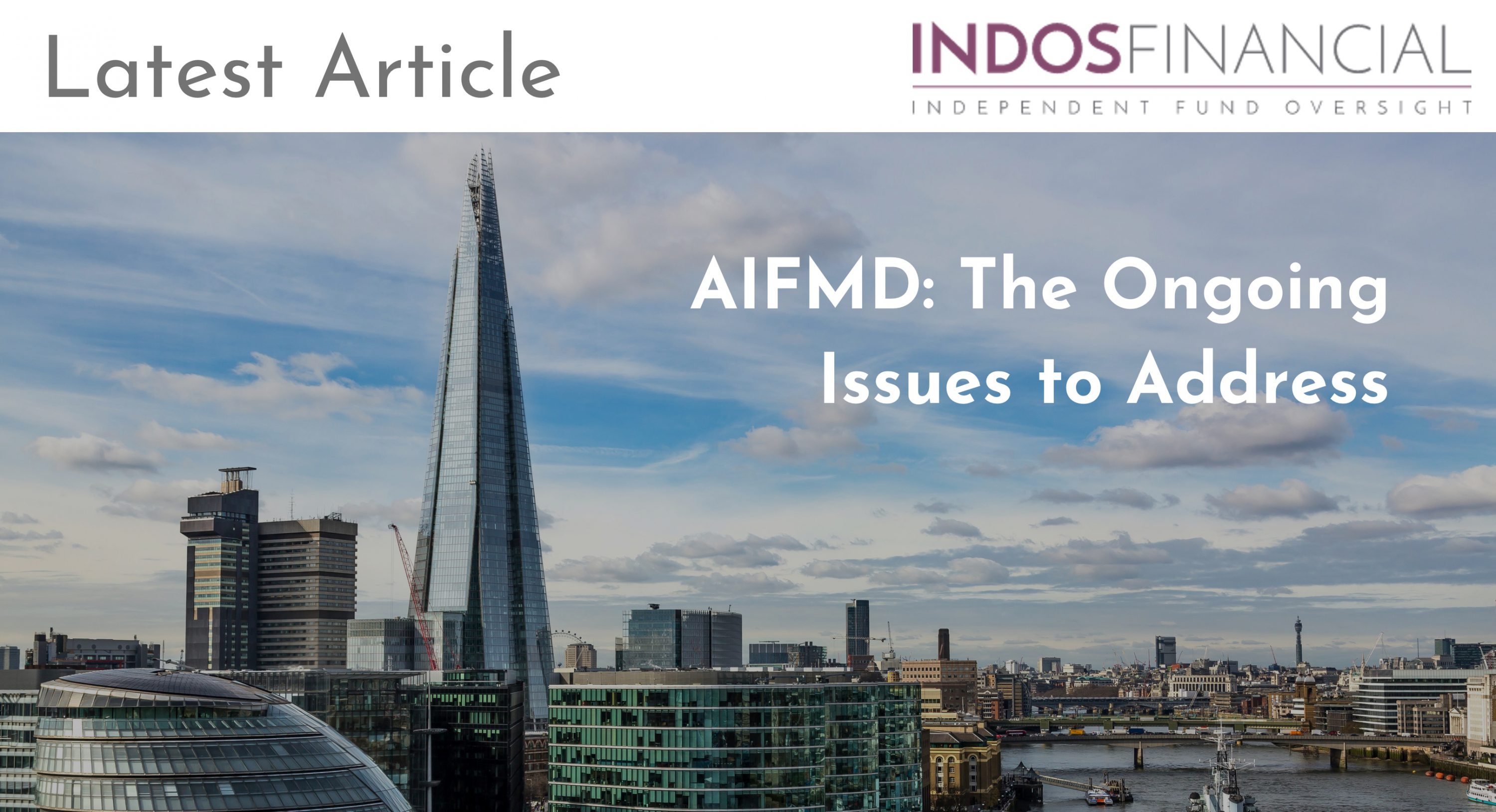Introduced into local law in 2014, the EU’s AIFMD (Alternative Investment Fund Managers Directive) has implemented a number of wide-ranging reforms in the alternative asset management industry as regulators looked to address some of the risks and weaknesses in the financial system post-2008. Since then, various amendments have been made to AIFMD, including revised asset segregation requirements; tighter rules around marketing; and enhanced liquidity risk management obligations, the latter of which will take effect from September 2020. Despite these changes, AIFMD remains incomplete and there are several outstanding issues that have yet to be addressed.
In August 2020, the European Securities and Markets Authority (ESMA) published a letter to the European Commission (EC) outlining its proposals on further reform of the AIFMD. The letter is the culmination of ESMA’s multi-year review of AIFMD which also included an extensive study conducted by KPMG in 2018, the findings of which were published in January 2019. Although ESMA’s letter made some AIFMD related recommendations, there were some notable omissions and a troubling focus on substance and the delegation of asset management tasks by EU managers to firms outside the EU which could have a material impact on the management of EU domiciled funds in the future.
Marketing: Still none the wiser
While ESMA’s letter made a brief reference to the need to deliver more clarity on reverse solicitation amid concerns that some member states have interpreted the provisions very differently, there was no mention about extending the AIFMD marketing passport to non-EU third countries. Subject to regulatory equivalence, the EU previously said in 2015 that non-EU AIFs may eventually be able to avail themselves to the AIFMD marketing passport, enabling them to distribute products across the EU without having to resort to country-specific private placement regimes. A handful of markets were initially expected to be granted the AIFMD passport, but the Brexit vote in 2016 derailed the initiative. Since then, no country has been awarded AIFMD passporting rights, widely thought to be because of concerns on the EU side that it could set a bad precedent for Brexit talks.
Lacking on depositary detail
The letter is also notable for its lack of guidance about depositaries. While ESMA opined in 2017 that depositaries do not need to apply the delegation rules (and associated strict liability) when delegating safekeeping to an Issuer CSD (central securities depository), this provision has unfortunately not been extended to Investor CSDs as well. A uniform extension to CSDs would have facilitated competition in the depositary market and enabled depositaries to provide more flexible client solutions. ESMA was also quite elusive on the idea of creating a pan-EU depositary passport.
Despite having previously conceded the lack of a depositary passport ran counter to the Single Market’s guiding principles, ESMA did not explicitly call for the establishment of a depositary passport, but advised the EC analyse the risks and benefits of such a concept in its AIFMD review.
Most disappointingly, the AIFMD review has not addressed the conflicts of interest facing depositaries which are affiliated to other service providers such as fund administrators or custodians. As INDOS has repeatedly stated, there is an all too real risk that an affiliated depositary might not flag breaches in other parts of the business, potentially compromising investor protection. This is a problem, as seen by recent events, which regulators need to recognise and find a resolution to.
A more meaningful measure of leverage
Leverage has been an area of dispute in AIFMD since its inception. ESMA has in the past warned that highly geared alternative investment funds can increase systemic risk during stressed market conditions, especially when they are deleveraging. Leverage is often derided as being an inherently risky and destabilising activity. However, funds deploy leverage not just to enhance returns, but to offset and manage portfolio risk. The AIFMD requirement that managers use the gross notional exposure (GNE) method for calculating leverage often means that their funds appear to be more geared than they actually are. Although the latest ESMA letter is light on detail about leverage, it does concede that the GNE calculation method may need reviewing and aligned with more recent IOSCO guidance, something which industry bodies have been lobbying for extensively.
After six years, more progress is required
Six years have now elapsed since AIFMD came into force. Even though the rules have been fine-tuned, there needs to be further improvements and clarity on issues including leverage, the role of the depositary and third country marketing. After multiple reviews and industry consultations on the directive, progress on AIFMD has been scant. While Brexit and Covid-19 have caused significant challenges for policymakers, AIFMD cannot be allowed to wither. Instead, it is time the inconsistencies and uncertainties that have blighted AIFMD over the last few years are remedied.




